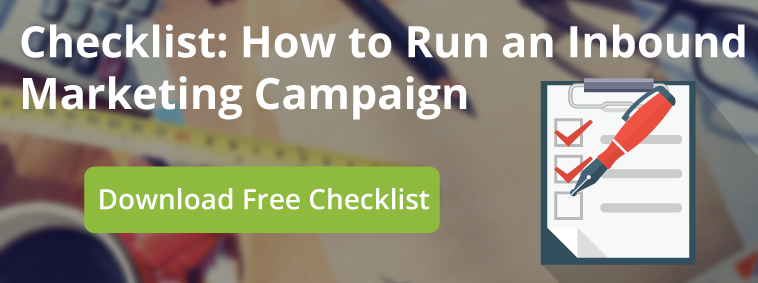Traditional marketing, from a consumer’s perspective, can be intrusive and sometimes annoying. So marketers took those consumers’ thoughts into great consideration and revolutionized a new way of marketing. Inbound marketing is based around what interests the consumer without invading the consumer’s space. Rather than pushing your marketing on them, inbound marketing brings them to you. HubSpot might just be the guru of inbound marketing and I was lucky enough to learn from the master. Now I’ll try to break down what I learned and teach you the interworks of inbound marketing.
What is Inbound Marketing?
HubSpot defines inbound marketing as online strategies to share “helpful, relevant content” with the right niche audience. This requires a proper balance of intriguing websites, social media platforms and blogs, in depth analysis and search engine optimization (SEO). Before I throw a lot of terminology at you, I want you to keep in mind something that helped me understand the mechanics of inbound marketing: Always remember the main goal is to provide a solution (service or product) to your buyer’s problem or opportunity. This means you need the right tools and tactics to persuade the buyer that your solution is the best, without telling the buyer directly. My first lesson in HubSpot’s Academy was learning the inbound methodology. This methodology is a guideline to create the most effective consumer based marketing strategy. The four main components work to gather customers and promoters. The inbound methodology is:
- Attract: Entice the right strangers to stumble upon your website through blogs, social media, etc.
- Convert: Now you have visitors who are looking for solutions on your site. Gaining information from these visitors will help you create leads and further target the customers you are looking for.
- Close: In time, these leads will close into regular customers.
- Delight: Now you have all this information from your customers and know exactly what they need. Continue to be the solution and they’ll be so satisfied they begin to promote more strangers for your company.
This might be a little confusing at first (as it was for me) but hopefully it will all make sense once I explain the practices of inbound marketing.
Fundamentals of Inbound Marketing
HubSpot suggests a number of practices that provides for every step of the inbound methodology. It might help if you keep in mind that the inbound methodology umbrellas the fundamentals.
- As I said before, inbound marketing is based off the consumer, or what HubSpot refers to as “person-centric”. So creating a buyer persona is the first necessary step of inbound marketing. The buyer persona is a fictional interpretation of who your target audience is. Research as much information as you can from your past data and create a life for them. Know the buyer persona’s demographic, job, challenges, interests and dislikes. Collect anything that will strengthen your buyer persona.
Next is the buyer’s journey. It is broken up into three stages: awareness, consideration and decision. It is important to remember you are looking at this from the buyer’s perspective. Put yourself in the shoes of your buyer persona.
- The awareness stage is when your buyer has a problem or opportunity. It is quickly followed by the consideration stage, which is when the buyer identifies the problem or opportunity and begins to look for solutions. In the decision stages your buyer then chooses the best solution he or she can find. You want your company to be the solution the buyer picks. This is why understanding the kinds of problems and opportunities your buyer might encounter will help you provide for their decision stage.
- In order to be the solution, you need the right content. You want to capture the attention of your buyer. When you provide your solution, use blog or videos or anything interactive and appealing. But content does not come alone. HubSpot says that along with content comes context. Use a voice that compliments your buyer’s. Intertwine content and context so they help your company become the solution to the buyer’s problem or opportunity.
- Lastly, leverage your content. Make sure your content is accessible through any forms on the internet your buyer might be utilizing.
Tying it all Together
Now you know the inbound methodology and fundamentals of inbound marketing. Lastly, is to tie them together. You want to attract strangers to become visitors by appealing to them through the buyer persona you created and what they might be interested in learning. You then want to convert those visitors into leads as they explore what your company has to offer in the consideration stage. Once your buyer has picked your solution in the decision stage you can close them into leads so not only will you gain the benefit of a new customer but you can collect even more data from that buyer. Finally, you know exactly what that buyer wants and you can provide for and keep your buyer delighted. And remember! Keeping your buyer delighted will influence your buyer to promote your company to others. …Or we can do it for you!


